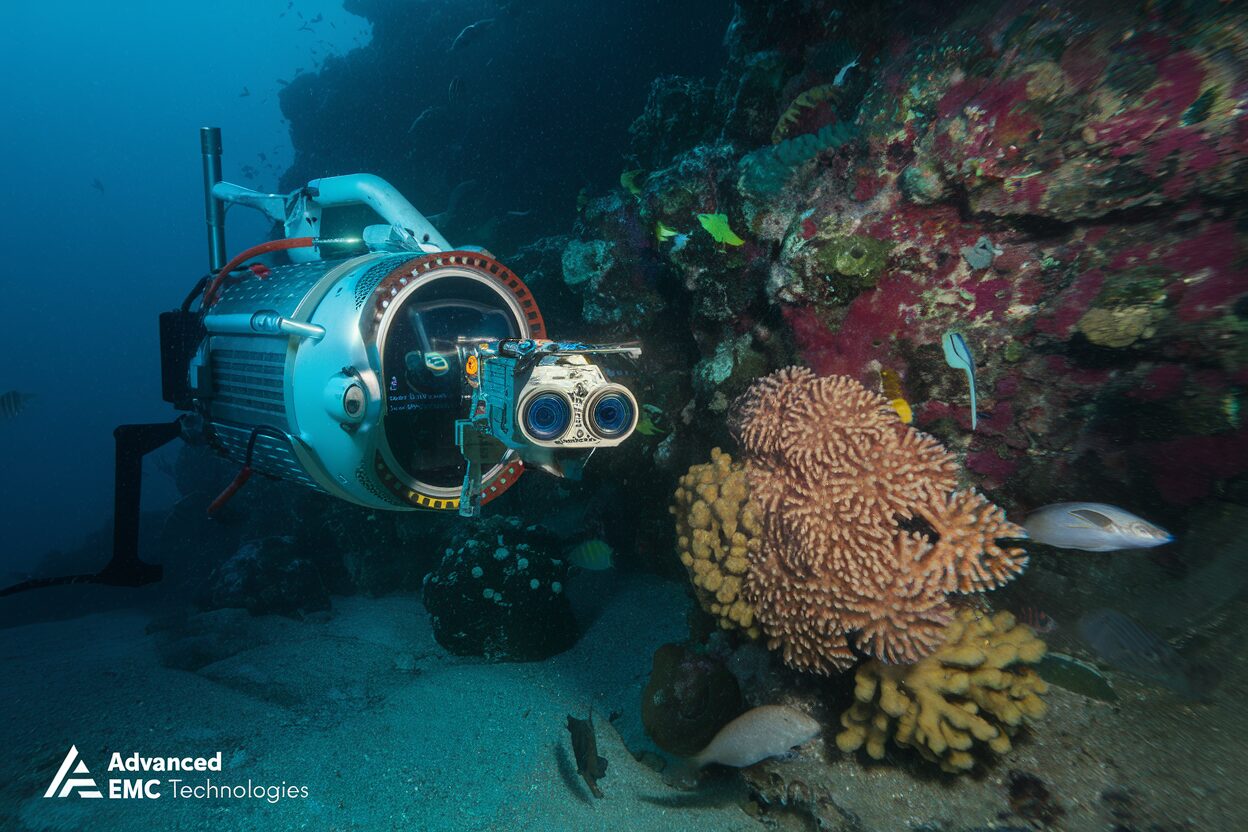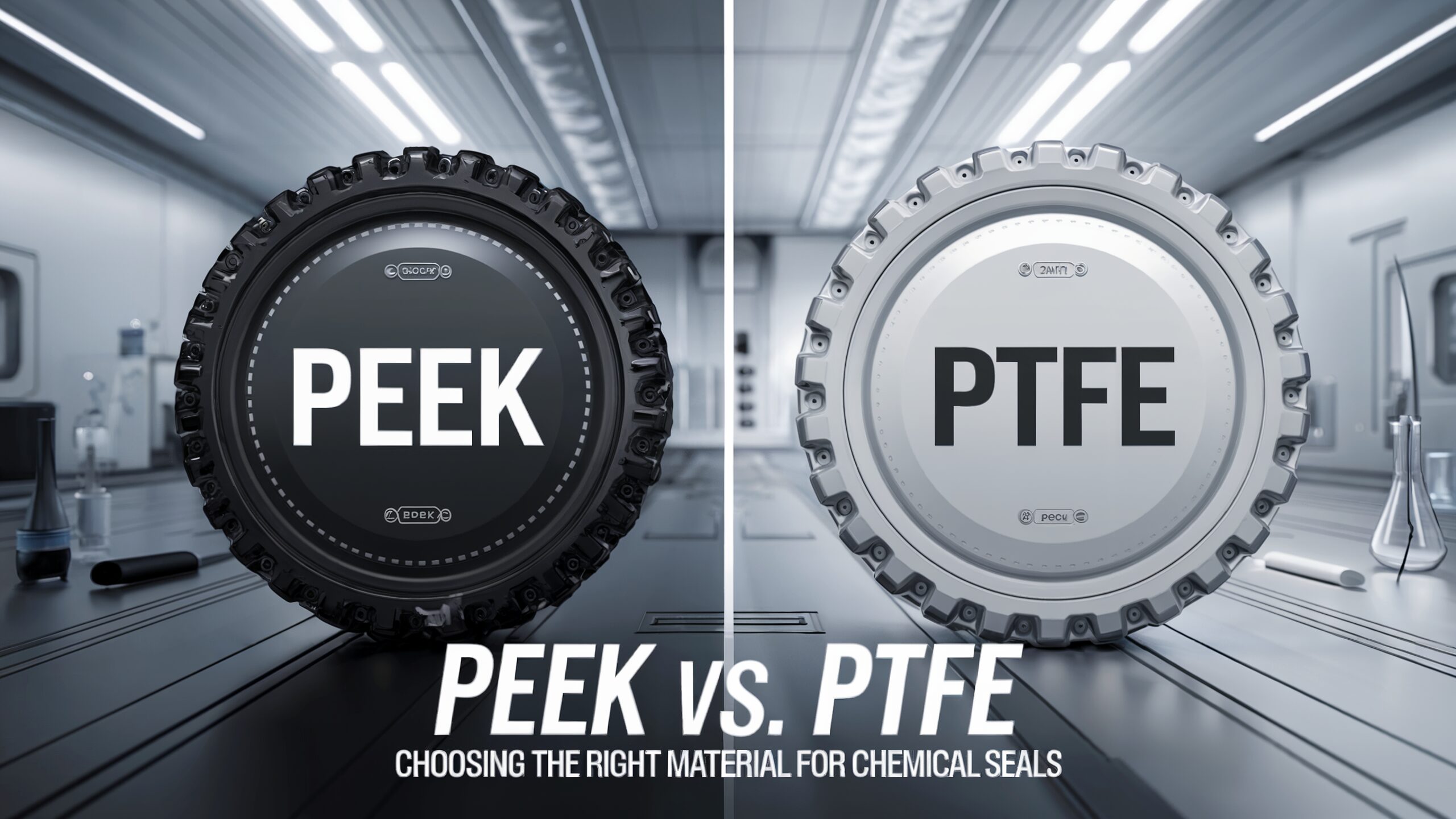Engineering Solutions for Deep Sea Exploration
The Role of High-Pressure Seals in Subsea Environments
In the field of deep-sea exploration, every piece of equipment must withstand some of the most extreme conditions on Earth. From crushing pressures to corrosive saltwater environments, components used in subsea systems require advanced engineering to ensure reliability and durability. One critical component that makes these systems possible is the high-pressure seal.
At Advanced EMC Technologies, we specialize in designing custom sealing solutions that stand up to the unique challenges of deep-sea exploration. In this blog, we’ll discuss the vital role of high-pressure seals in subsea environments and the engineering solutions that make reliable underwater operations possible.
Why High-Pressure Seals Matter in Subsea Environments
The deep-sea environment is characterized by extreme pressures that increase by approximately one atmosphere (14.7 psi) for every 10 meters of depth. At depths of several thousand meters, these pressures can exceed 15,000 psi—enough to crush materials that aren’t specifically designed to withstand such forces. High-pressure seals are essential to prevent water ingress into sensitive electronic equipment, hydraulic systems, and other critical components.
In addition to pressure, deep-sea seals must also resist:
- Corrosion from constant saltwater exposure
- Extreme temperatures due to fluctuating thermal gradients
- Abrasion from sand, sediment, and debris
Without robust seals, subsea systems risk failure, leading to significant operational and financial losses.
Key Material Considerations for High-Pressure Seals
Selecting the right material for deep-sea seals is essential for reliable performance. The materials used must resist deformation under extreme pressures, remain flexible in cold temperatures, and withstand corrosive saltwater environments. Here are some materials commonly used in high-pressure subsea seals:
PTFE (Polytetrafluoroethylene): Known for its excellent chemical resistance and low friction, PTFE is ideal for sealing applications that involve exposure to corrosive seawater. PTFE also remains flexible at low temperatures, making it suitable for cold underwater environments.
PEEK (Polyetheretherketone): PEEK offers high mechanical strength, excellent chemical resistance, and stability under high pressure, making it well-suited for high-stress applications. It is often used in dynamic seals within hydraulic systems where durability is critical.
NBR (Nitrile Butadiene Rubber): While not as resilient as PTFE or PEEK in extreme conditions, NBR is cost-effective and resistant to moderate pressure and temperature changes, making it suitable for less demanding subsea applications.
At Advanced EMC Technologies, we use these and other high-performance materials to create custom sealing solutions that withstand the unique challenges of deep-sea exploration.
Types of High-Pressure Seals for Subsea Applications
Deep-sea equipment relies on a variety of seals, each serving a specific function within the system. Here are some of the most common types used in subsea environments:
O-Rings: O-rings are simple yet effective seals that can handle high pressure when made from the right materials. In deep-sea applications, we typically use materials like PTFE or Viton® to ensure long-lasting durability.
Spring-Energized Seals: For dynamic applications, such as those with moving parts, spring-energized seals provide a reliable seal under fluctuating pressures. The spring maintains constant force on the seal lips, ensuring a tight seal even under extreme conditions.
Metal C-Rings: When ultimate strength is needed, metal C-rings are often chosen. Made from materials such as stainless steel or Inconel, these rings are highly resistant to deformation and corrosion, making them ideal for ultra-deep-sea applications.
Lip Seals: Lip seals are effective at excluding water and dirt from rotating equipment. We often recommend them for applications that involve shafts and other rotating components, ensuring that the system remains free of contaminants.
Challenges in Designing Subsea High-Pressure Seals
Creating seals that perform in deep-sea environments requires specialized engineering due to several design challenges:
Pressure Compensated Designs: Seals must be able to handle constant and fluctuating pressure. Pressure compensation mechanisms, which balance internal and external pressures, are often integrated into seal designs to avoid failure.
Thermal Expansion and Contraction: Subsea seals face wide temperature variations, especially near hydrothermal vents or in the colder regions of the ocean. These temperature changes can cause materials to expand or contract, so choosing materials with low thermal expansion coefficients is essential.
Chemical Resistance: Saltwater isn’t the only challenge; deep-sea equipment may encounter hydrocarbons, hydrogen sulfide, and other chemicals that degrade standard materials. Selecting chemically resistant materials like PTFE or specialized elastomers is crucial for durability.
Biofouling Resistance: Marine organisms can attach themselves to equipment and degrade seals over time. Certain materials, coatings, or seal designs can prevent or reduce biofouling, extending the life of subsea equipment.
Real-World Applications of High-Pressure Seals in Deep-Sea Environments
High-pressure seals are essential for a wide range of deep-sea exploration applications, including:
ROVs (Remotely Operated Vehicles): ROVs rely on high-pressure seals to protect their electronics and hydraulic systems as they operate at great depths. Without these seals, essential components would be exposed to water and pressure damage.
Subsea Pumps and Valves: High-pressure pumps and valves used for oil and gas extraction must have robust seals to prevent leaks. These seals protect both the equipment and the surrounding environment.
Underwater Sensors and Communication Systems: Seals prevent water ingress in underwater sensors and communication systems, which are critical for data collection and transmission from the seafloor to the surface.
Advanced EMC’s Custom Sealing Solutions for Deep-Sea Exploration
At Advanced EMC Technologies, we understand the specific challenges involved in deep-sea applications. Our team of experts collaborates with clients to design and manufacture custom high-pressure seals tailored to your unique needs. We use advanced materials, precision engineering, and rigorous testing to ensure that our seals perform reliably under the most demanding conditions.
Whether you need spring-energized seals for an ROV or metal C-rings for deep-sea oil extraction, we deliver solutions that keep your operations safe, efficient, and reliable.
Deep-sea exploration depends on high-performance sealing solutions capable of withstanding extreme pressure, corrosive environments, and temperature fluctuations. Choosing the right materials, seal types, and designs is essential for successful subsea operations. At Advanced EMC Technologies, we’re committed to providing engineered sealing solutions that help you achieve your deep-sea goals with confidence.
If you’re interested in learning more about how we can support your subsea projects, reach out to our team today.


